
Architecture of Totalitarianism
I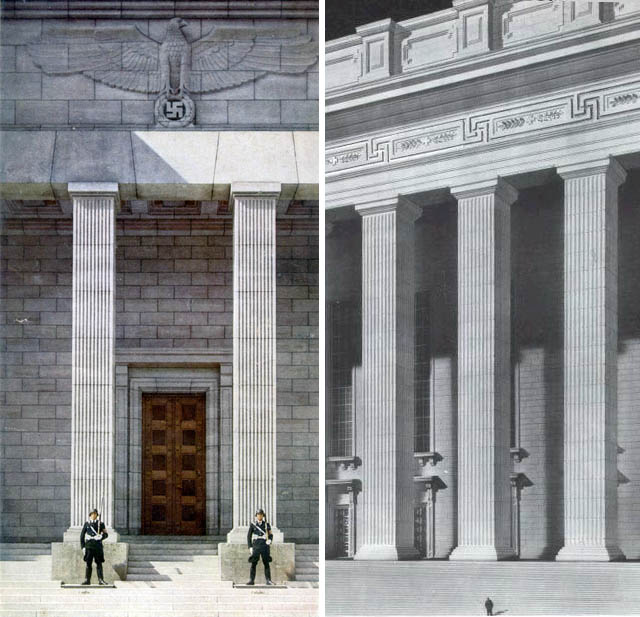 f
you examine the pictures of the twentieth century architecture, you
could not help noticing that government buildings, “palaces of
culture,” “palaces of labour,” stadiums and other typical
architectural landmarks of the Stalin era, looked very much like
similar structures built in Nazi Germany and in Fascist Italy. But
there is nothing surprising in it: any totalitarian system used
architecture to establish its authority. One of the chief aims of
Nazi architecture was also to glorify the idea of the master Aryan
race.
f
you examine the pictures of the twentieth century architecture, you
could not help noticing that government buildings, “palaces of
culture,” “palaces of labour,” stadiums and other typical
architectural landmarks of the Stalin era, looked very much like
similar structures built in Nazi Germany and in Fascist Italy. But
there is nothing surprising in it: any totalitarian system used
architecture to establish its authority. One of the chief aims of
Nazi architecture was also to glorify the idea of the master Aryan
race.
There was no official Nazi architectural style although most of the structures and monuments designed by Albert Speer and others imitated Imperial Rome. The Nazis, who dismissed much of the customary decoration and used only the raw, muscular elements, exaggerated the classical Roman style, which portrayed their ideal image of a strong, warlike state. This was known as stripped classicism, which was also popular in other countries at that time.
Architects worked on projects that used stark facades with columns, pilasters, and clean lines on a massive scale to create a new aesthetic. Like the Fascist "New Man," this new building style would exude power and domination. Anyone who ventured into one of these buildings would see in their size the irresistible wealth and power of the Third Reich.
W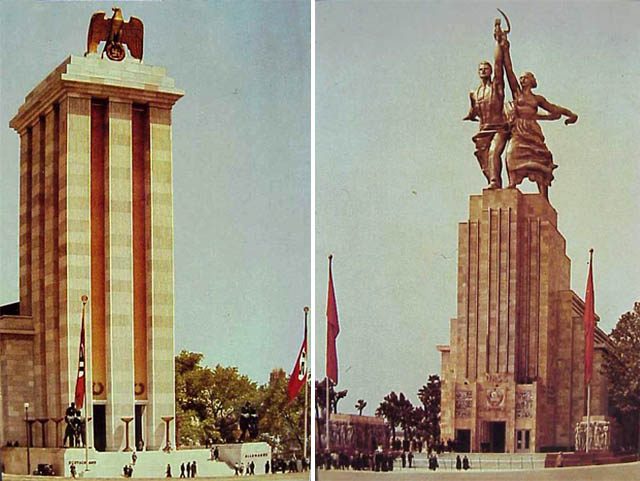 hen
the International Exposition dedicated to Art and Technology in
Modern Life was held in 1937 in Paris, the two most prominent
pavilions belonged to Germany and the Soviet Union, which were
located directly across from each other. With a height of 500 feet,
the Nazi pavilion designed by Albert Speer, was topped with a tower
displaying a gigantic swastika and eagle, symbols of National
Socialism. Worker and Kolkhoz Woman, a 78 feet high sculpture made
from stainless steel by Vera Mukhina, crowned the Soviet pavilion.
The sculpture is an example of the socialist realistic style, as well
as Art Deco style.
hen
the International Exposition dedicated to Art and Technology in
Modern Life was held in 1937 in Paris, the two most prominent
pavilions belonged to Germany and the Soviet Union, which were
located directly across from each other. With a height of 500 feet,
the Nazi pavilion designed by Albert Speer, was topped with a tower
displaying a gigantic swastika and eagle, symbols of National
Socialism. Worker and Kolkhoz Woman, a 78 feet high sculpture made
from stainless steel by Vera Mukhina, crowned the Soviet pavilion.
The sculpture is an example of the socialist realistic style, as well
as Art Deco style.
Totalitarian art
T otalitarian
art was marked by some features which make it a fascinating study:
there were rules which prescribed, what size a monument of Lenin
should be depending on the importance of the place the monument was
to be erected at, and varied from stupendous giants in big cities to
small, mass-produced things in villages. A great number of artists, a
separate caste indeed, specialized in producing official art which
included not only the portrayal of the leaders but also Soviet
mythology types: muscled workers in overalls; happy, ruddy and
smiling farmers; valiant soldiers; thoughtful scholars, always
bespectacled.
otalitarian
art was marked by some features which make it a fascinating study:
there were rules which prescribed, what size a monument of Lenin
should be depending on the importance of the place the monument was
to be erected at, and varied from stupendous giants in big cities to
small, mass-produced things in villages. A great number of artists, a
separate caste indeed, specialized in producing official art which
included not only the portrayal of the leaders but also Soviet
mythology types: muscled workers in overalls; happy, ruddy and
smiling farmers; valiant soldiers; thoughtful scholars, always
bespectacled.
The yard of practically every school was “decorated” with a statue of a “young Leninist pioneer” blowing a horn, or reading a book. Almost every park in the Soviet Union had a sculpture of an athlete with an oar – usually a robust woman made of white plaster which, probably, was to symbolize the excellent health and athletic aspirations of the Soviet people.
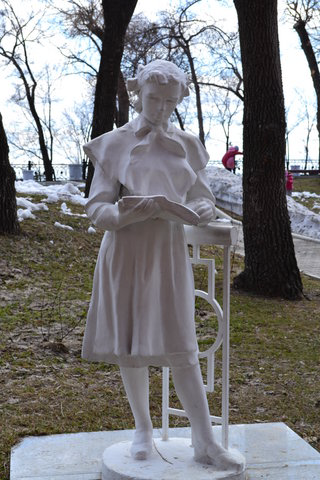
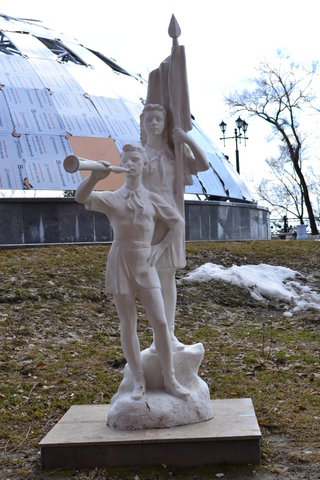
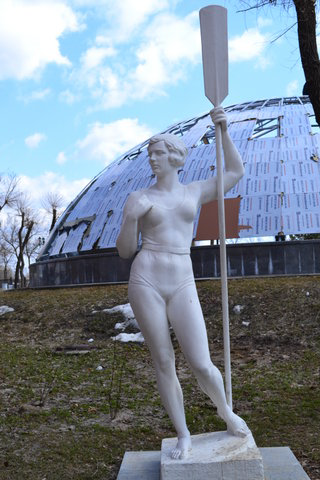
In a wave of democratic exuberance and excesses, the Eastern European peoples pulled down thousands of monuments of the “great leaders” and of other symbols of totalitarianism. Some of them should have been left. Whether you like it or not, they are part of our history, no matter what kind of history it was. Besides, some of the monuments of the Soviet era were good works of art and not just mass-produced ugly, badly made things. We have forgotten the names of those Pharaohs, kings and emperors who made their subjects erect gigantic pyramids, temples and palaces but we appreciate these creations as great contributions to the world culture.
